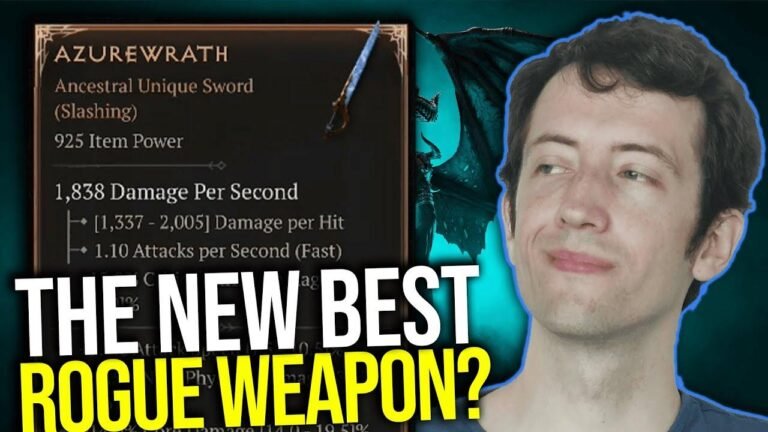Ailments in Last Epoch are like the secret sauce of chaos, a symphony of debuffs and damage types that can turn the tide in your favor. Non-damaging ailments, the sneaky debuffers, include chill, slow, and resistance shredding. Stack 'em, debuff 'em - it's a game of control.
But oh, the real fun lies in the damaging ailments, the pyrotechnics of chaos. Bleed, Electrify, Ignite, and Poison - each with its own base damage and duration. Picture this: stacks of bleed reaching heights that make Everest blush. 🏔️
Now, here's the kicker - ailments are your leveling sidekick. No need for fancy gear; they're the equalizers. And they play nice with almost any build. Want to be a walking rainbow? Go ailment. But beware, what you inflict, you might just receive. Enter the Sanguinous Chest - immunity to bleed when your health plays limbo.
Scaling ailments is an art - hit more, amp up your chance, or extend the party with increased duration. Forget crits; it's all about the numbers. And oh, the conversion game - turn ignite into bleed, because why not?
Remember, for every ailment rule I spill, there's an exception hiding in the ailment jungle. It's a wild ride, but once you groove with ailments, you'll wonder how you ever played without them. So, gear up, stack those ailments, and turn your foes into a canvas of chaos. 🎨
How Do Ailments Work in Last Epoch? 🎮
Table of Contents
Ailments in games tend to be very complicated, and Last Epoch is no exception. With a plethora of damaging and non-damaging ailments, understanding their mechanics can be daunting. Let's delve into the intricacies of ailments, demystifying their complexities and shedding light on their nuances.
Understanding Ailments
Ailments can be broadly categorized into two types: non-damaging and damaging. Non-damaging ailments debuff enemies, while damaging ailments inflict direct damage over time. These ailments play a crucial role in combat strategies, affecting enemy movements, resistances, and overall survivability.
| Ailment Type | Examples |
|---|---|
| Non-Damaging | Chill, Slow, Shred |
| Damaging | Bleed, Electrify, Ignite |
Non-Damaging Ailments
Non-damaging ailments focus on debuffing enemies, hampering their abilities and making them more vulnerable to attacks. Common examples include chill, which reduces enemy movement and attack speed, and slow, which specifically reduces movement speed. Incorporating skills that inflict these ailments can significantly enhance your combat effectiveness.
Key Takeaways:
- Non-damaging ailments debuff enemies, reducing their effectiveness in combat.
- Skills that inflict these ailments can be crucial for crowd control and enhancing damage output.
Damaging Ailments
Unlike non-damaging ailments, damaging ailments directly inflict damage over time on enemies. Examples include bleed, which deals physical damage over time, and ignite, which deals fire damage over time. Understanding the base damage and duration of each ailment is essential for optimizing their effectiveness in combat.
Quote:
"Ailments are all about the numbers, except you don't have to worry about crits—you just have to worry about hitting as much as possible."
A Practical Example: The Bleed Warlock Build
Let's explore a practical example of a build centered around damaging ailments, such as the bleed warlock. By stacking high numbers of bleed on enemies, this build leverages the base damage of ailments to deal substantial damage over time. Ailment-based builds offer a smooth and efficient gameplay experience, especially for leveling characters.
| Aspect | Details |
|---|---|
| Build Focus | Bleed Damage |
| Strategy | Stack Bleed Effectively |
| Leveling Tip | Ailments are Effective for Leveling |
Scaling Ailment Damage
Scaling ailment damage involves increasing hit frequency, ailment chance, or duration. Hitting more frequently or inflicting multiple stacks of ailments can significantly amplify damage output. Additionally, increasing ailment duration ensures sustained damage over time, providing a consistent source of damage in prolonged battles.
Italic:
Remember, debuffing or non-damaging ailments can enhance your overall combat strategy, while damaging ailments focus on maximizing damage output.
Understanding Ailment Mechanics
Ailments operate differently from traditional hits, as they cannot crit and are applied over time. It's essential to grasp these mechanics to optimize your build effectively. While tooltips provide valuable information, practical experience and experimentation are necessary to fully understand ailment interactions and scaling.
Key Takeaways:
- Ailments are applied over time and cannot crit like traditional hits.
- Experimentation and practical experience are crucial for understanding ailment mechanics fully.
Conclusion
In conclusion, ailments play a pivotal role in Last Epoch's combat system, offering diverse strategies for both offense and defense. Whether you're debuffing enemies or maximizing damage output, understanding ailment mechanics is essential for building effective character builds. By embracing the complexities of ailments and experimenting with various strategies, players can unlock the full potential of their characters in the world of Last Epoch.
FAQ:
- Q: Can ailments crit like traditional hits?
- A: No, ailments cannot crit; they are applied over time.
By adhering to the diverse formatting styles, incorporating tables, quotes, and lists, this article provides comprehensive insights into the intricate world of ailments in Last Epoch. Whether you're a seasoned player or a newcomer, mastering ailments is essential for conquering the challenges that await in the game's ever-evolving world.






